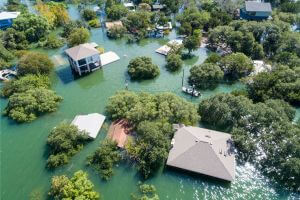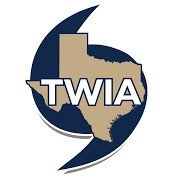Homeowners Insurance


One of the most important insurance policies that ICT focuses on is homeowners insurance. Homeowners insurance is designed to protect homeowners from financial losses due to damage or destruction of their home and personal property. In this article, we will discuss the basics of homeowners insurance in Texas and how it works.
What is Homeowners Insurance?
Homeowners insurance is an important policy for homeowners to have, as it provides financial protection in the event of a covered loss. While homeowners insurance policies in Texas can vary, most policies cover damage caused by fire, wind and hail, theft, and water damage. Homeowners should be aware of what their policy covers and what it does not cover, as well as the cost of the policy and ways to reduce the cost.
Types of Homeowners Insurance Coverage
There are several types of coverage included in most homeowners insurance policies. These include:
- Dwelling Coverage: This coverage protects the structure of the home itself, including the walls, roof, and foundation.
- Personal Property Coverage: This coverage protects personal belongings inside the home, such as furniture, clothing, and electronics.
- Personal Liability Coverage: This coverage protects homeowners from damages or injuries to others on their property.
- Additional Living Expenses Coverage (ALE): This coverage pays for living expenses, such as hotel bills or meals, if a homeowner is displaced from their home due to a covered loss.
- Medical Payments Coverage: Pays medical bills of people injured on your property, plus may pay for some injuries that happen away from home.
What Risks Does Homeowners Insurance Cover in Texas?


- Fire and Smoke: Homeowners insurance policies typically cover damage caused by fires and smoke.
- Wind and Hail: In Texas, wind and hail can cause significant damage to homes. Most homeowners insurance policies cover damage caused by wind and hail.
- Theft and Vandalism: Homeowners insurance policies usually cover damage caused by theft and vandalism.
- Water Damage: Homeowners insurance policies typically cover water damage caused by burst pipes but may not cover damage caused by floods.
What Does Homeowners Insurance Not Cover in Texas?


- Flood Damage: Homeowners insurance policies typically do not cover damage caused by floods. Homeowners in Texas can purchase flood insurance separately through the National Flood Insurance Program (NFIP).
- Earthquakes: Most homeowners insurance policies do not cover damage caused by earthquakes. Homeowners in Texas can purchase earthquake insurance separately if they live in an area prone to earthquakes.
- Maintenance-Related Damage: Homeowners insurance policies do not cover damage caused by lack of maintenance, such as leaky pipes or worn-out appliances.
- Intentional Damage: Homeowners insurance policies do not cover damage caused intentionally by the homeowner.
How Much Does Homeowners Insurance Cost in Texas?
The cost of homeowners insurance in Texas varies depending on several factors, including the location and age of the home, the value of the home, and the deductible amount. Homeowners can reduce the cost of their insurance by choosing a higher deductible, installing safety features in their home, and bundling their insurance policies with the same provider.
How is Homeowners Insurance Regulated in Texas?


Homeowners insurance in Texas is regulated by the Texas Department of Insurance (TDI), which is responsible for overseeing the insurance industry in the state. The TDI ensures that insurance companies comply with state laws and regulations and that they operate in a fair and competitive market.
In Texas, insurance companies are required to file their rates and policy forms with TDI before they can be used. The TDI reviews these filings to ensure that they comply with state law and that they are not discriminatory or excessive. If TDI finds any issues with the filings, it may require the insurance company to make changes before the rates and policy forms can be used.
The TDI also has the authority to investigate insurance companies for any violations of state law or regulations. If an insurance company is found to be in violation, TDI can take enforcement action, including fines or revoking the company's license to operate in the state.
In addition to regulating insurance companies, TDI also provides resources to consumers to help them understand their insurance policies and to file complaints if they have issues with their insurance company. The TDI's website provides information on homeowners insurance, including a guide to understanding homeowners insurance and a tool: HelpInsure.com to help consumers compare rates and coverage from different insurance companies.


The Texas Windstorm Insurance Association (TWIA) is another important player in the regulation of homeowners insurance in Texas. The TWIA is a state-run insurance program that provides wind and hail coverage to homeowners in certain coastal areas of the state. The TWIA is overseen by the Texas Department of Insurance and is subject to the same regulations as other insurance companies.
The TWIA is funded by policyholder premiums and assessments on insurance companies operating in the state. The TWIA is required by law to maintain sufficient reserves to cover potential losses and is subject to regular financial and operational audits by the TDI.
How to File a Homeowners Claim
Filing a homeowners insurance claim in Texas can seem like a daunting task, but it is a necessary step in the event of damage or loss to your property. Here are the steps you should follow to file a homeowners insurance claim in Texas:
Contact your insurance company: The first step is to contact your insurance company as soon as possible after the damage occurs. You can find the contact information for your insurance company on your policy documents or online. Be prepared to provide your policy number and a description of the damage or loss.
Document the damage: Before making any repairs, it is important to document the damage with photographs or videos. This will provide evidence of the damage for your insurance company and can help support your claim.
Mitigate further damage: Take steps to prevent further damage, such as covering broken windows or leaks with tarps or boards. Keep any receipts or invoices for expenses related to mitigating further damage, as these may be covered by your insurance policy.
Meet with an adjuster: Your insurance company will send an adjuster to assess the damage and determine the extent of coverage under your policy. Be prepared to provide the adjuster with the documentation and evidence of damage you have collected.
Review your policy: Review your insurance policy to understand the coverage limits and deductibles for your claim. Make sure you understand any exclusions or limitations in your policy, as this will affect the amount of coverage you receive.
Submit a claim: After the adjuster has assessed the damage, you can submit a claim to your insurance company. You may be required to fill out additional paperwork or provide more documentation at this stage.
Await a decision: Your insurance company will review your claim and decide about coverage. If your claim is approved, you will receive payment for the covered damages, minus any deductible you are required to pay.
It is important to remember that filing a homeowners insurance claim can be a complex and time-consuming process. Be patient and persistent in your communication with your insurance company and keep detailed records of all conversations and paperwork. If you have any questions or concerns about your claim, do not hesitate to reach out to your insurance company for guidance.
Homeowners Underwriting 101
The underwriting process for property insurance in Texas involves a thorough evaluation of the property, the owner, and the risks associated with insuring the property. This process is designed to help insurance companies determine the appropriate premiums to charge for coverage and to ensure that they are not taking on too much risk.
The underwriting process begins with an application, which is completed by the property owner. The application includes information about the property, such as its location, age, size, and features, as well as details about the owner, such as their credit history and claims history. Insurance companies use this information to assess the risk associated with insuring the property and to determine whether or not to provide coverage.
Once the application is received, the insurance company may conduct an inspection of the property to verify the information provided in the application. This inspection may include a review of the property’s condition, its safety features, and any potential hazards or risks that could increase the likelihood of a claim.
After the inspection is complete, the insurance company may request additional information from the property owner, such as proof of ownership or proof of income. This information helps the insurer to further evaluate the risk associated with providing coverage and to determine the appropriate premium to charge.
If the insurance company decides to offer coverage, they will provide the property owner with a quote for the premium. The premium is based on the risk associated with insuring the property, as well as the amount of coverage requested by the property owner.
Once the premium is agreed upon, the property owner must pay the premium in order to activate the policy. The policy will outline the terms and conditions of coverage, including any exclusions or limitations.
Throughout the policy period, the insurance company will continue to monitor the property and any potential risks. If the risk associated with insuring the property changes, the insurance company may adjust the premium or change the terms of coverage.
In Texas, there are certain regulations in place to protect property owners from unfair or discriminatory underwriting practices. For example, insurance companies are not allowed to use a person’s credit score as the sole basis for determining premiums, and they are required to provide discounts for certain safety features, such as smoke detectors or fire alarms.
Overall, the underwriting process for property insurance in Texas is designed to ensure that insurance companies are taking on an appropriate level of risk and that property owners are receiving fair and reasonable premiums for coverage.
